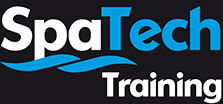Hot Tub Manual Handling (including basic manual handling)
The Hot Tub Manual Handling Course™ covers the essentials of hot tub manual handling and specific hot tub handling equipment. The course also incorporates basic manual handling principles and techniques.
The course is broken down into a lesson based presentation and practical demonstrations of safe hot tub handling including full training on the Spa Dolly range of equipment.
Upon completion of the training program, you will be able to safely demonstrate a range of methods of hot tub handling.
There are no experience requirements; new employees are eligible.
Did you know that one third of all workplace injuries are caused by heavy lifting?
In official terms it’s called ‘manual handling,’ because these accidents can occur at any stage; while you’re lifting, lowering, pushing, pulling or carrying something heavy.
The Health & Safety Executive (HSE) estimated that 1.6million working days were lost in 2012/13 to manual handling injuries, while the Labour Force Survey revealed the average time off work for the victims is 10.8 days.
Those statistics are significant enough for both workers and employers to take them seriously.
Proper training is vital when a job requires lifting, whether it involves machinery such as forklifts, hoists or conveyors, or is entirely by hand.
Your employer has a duty to provide it. If training is inadequate or absent, and you’re injured as a result, you could be entitled to compensation.





